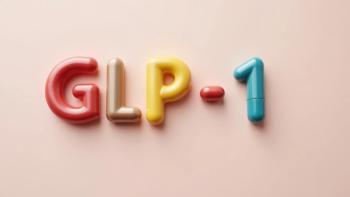
Potential New Combination Treatment for Pediatric Glioma
Findings from clinical trials of dabrafenib suggest that combining it with an MEK inhibitor will benefit pediatric patients with gliomas.
Researchers from a recent phase 1/2 clinical trial found a drug that elicited a high response rate may further improve response rates and lower toxicity in pediatric patients with brain cancer.
“The likelihood of curing a child with a low-grade glioma is very high. In fact, many children don’t suffer lifelong from the tumor but rather from the cognitive damage and secondary malignancies caused by radiation therapy,” said lead author Mark Kieran, MD, PhD. “The development of drugs that target the specific causative mutation of the tumor and avoid long-term toxicities may revolutionize the treatment of pediatric brain cancer.”
Dabrafenib is a selective inhibitor of the mutant protein BRAF V600, which plays a role in cell growth. In the phase 1 and 2 clinical trials, researchers examined dabrafenib in patients with BRAF V600-mutant low-grade
There were 15 patients included in the phase 1 trial, and 17 in the phase 2 trial, according to a study presented at the European Society of Medical Oncology congress. All patients included were between 1- and 16-years-old.
Since the phase 1 trial did not reveal any dose-limiting toxicities, researchers based the recommended dosing on the pharmacokinetic activity of the drug. The dose was set at 4.5-mg/kg/day for patients age 12 and older, and 5.25-mg/kg/day for patients younger than 12-years-old, according to the study.
“Pediatric low-grade gliomas are a little bit unique in that patients can survive their entire life with a tumor that stops growing, unlike other cancers which need to be completely removed,” Dr Kieran said.
Approximately 23 out of 32 patients (72%) responded to the drug, with 2 patients’ tumors disappearing. Another 11 patients had their tumor shrink by over 50%. There were 13 patients who had stable disease for more than 6 months, and 11 are still receiving treatment, according to the study.
Interestingly, no patients developed squamous cell carcinoma, which has been seen in adult patients with BRAF V600E positive tumors taking dabrafenib. Only 1 patient had an allergic reaction, while other adverse effects included transient fever, upset stomach, fatigue, and skin rash.
Previous studies in adults have shown a positive clinical benefit from combining a BRAF inhibitor with an MEK inhibitor. The combination therapy reduces toxicity, and produces more activity for an extended period of time, according to the study.
Those findings, combined with the current findings, provided the momentum to conduct phase 1 and 2 trials with an MEK inhibitor to determine dosing and toxicities in children. A trial that combines these 2 drugs is underway, the researchers noted.
“We want to make the response rate with dabrafenib even higher by combining it with a MEK inhibitor since that works in adults. Adding 2 drugs together normally produces twice as much toxicity. But much of the toxicity from the BRAF drug is inhibited by the MEK drug, so the combination is less toxic than either drug alone, which is unusual.” Dr Kieran concluded. “The finding that dabrafenib can shrink tumors or stop them growing is exciting and has led to trials with a MEK inhibitor and now the combination of drugs. This combined therapy may completely change the way we treat low-grade gliomas in children with this mutation. The caveat is that these targeted personalized drugs are relatively new so we need to make sure that they don’t have any long-term developmental toxicities in children.”
Newsletter
Stay informed on drug updates, treatment guidelines, and pharmacy practice trends—subscribe to Pharmacy Times for weekly clinical insights.


















































































































































































































